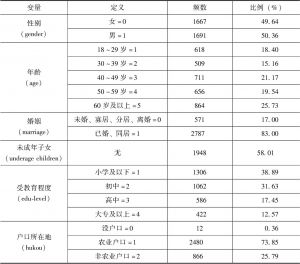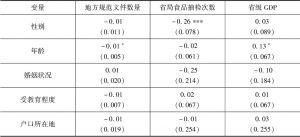论文
食品安全感知影响因素的层次性研究
摘要
本文重点研究了政府规制和公众的个体特性对食品安全风险感知的影响。根据影响因素的分层特征,首先,从风险感知理论的三个维度,即风险可控性、熟悉度和暴露程度出发,选取地方规范性文件数量、食品年度抽检次数等地方政府监管手段作为背景层测度指标;其次,将性别、年龄、婚姻、受教育程度和户口等个体层人口统计学特征指标纳入分析;最后将公众食品安全风险感知作为被解释变量,构建包含背景层与个体层的分层回归模型分析不同层次因素的影响。研究发现,女性、年轻、已婚、受教育程度较高的城镇居民具有更高的食品风险感知水平。从政府监管角度看,政府食品监管部门的抽检频次越多,民众的食品安全风险感知程度越低,即政府抽检频次能够显著降低民众食品安全的感知风险。同时,统计分析表明,政府抽检频次越高,食品安全风险感知的性别间差异越低。但是,食品安全地方规范性文件和省级经济状况对民众食品安全风险感知无直接的显著影响,而对年龄与食品安全感知的关系起到相反的调节作用。
检索正文关键字
论文目录
- 一 引言
- 二 文献综述
-
三 研究假设
- (一)背景层变量假设
- (二)个体层变量假设
-
四 实证分析
- (一)数据与方法
- (二)变量及描述性统计
- (三)模型及结果分析
- 1.验证模型适用性
- 2.检验个体层变量
- 3.检验背景层变量
-
五 主要结论、政策建议与研究局限性
- (一)主要结论
- (二)政策建议
- (三)研究局限性
相关文献
查看更多>>>







